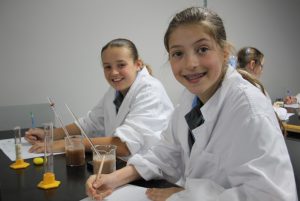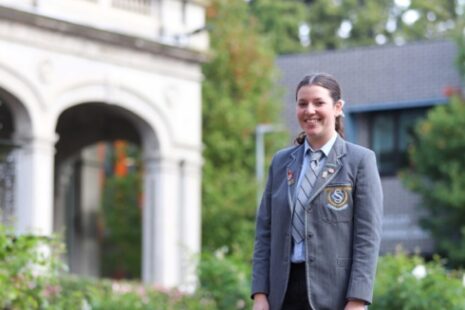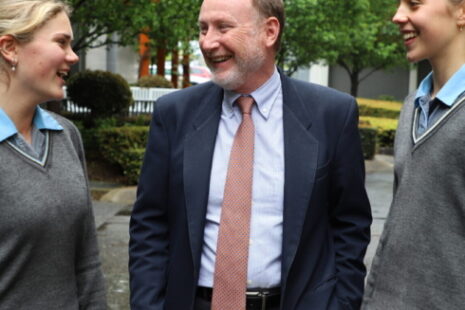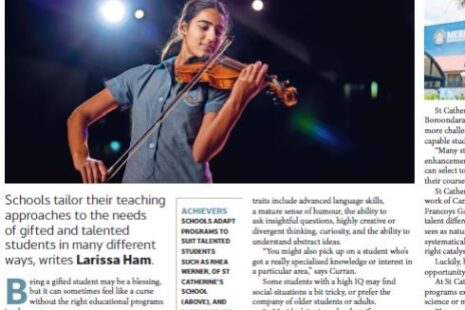How to convince girls they can be pilots or engineers

The Office of the Chief Scientist in Australia recently released an occasional paper Busting the Myths about Women in STEM aiming to dispel myths and long held societal beliefs about female participation in STEM (Science, Technology, Engineering and Mathematics) fields.
The Paper provided the following insights:
Myth 1 – Girls are bad at maths
FACT 1 – There is no innate gender difference in mathematics ability
In short, maths ability is not determined biologically by sex.
In Australia, girls and boys have vastly different attitudes to studying mathematics; more girls tend to be fearful and cautious while more boys are confident. During secondary school a gender gap in self-concept emerges; many girls perceive they have less ability than their achievements warrant, in comparison to boys with the same scores.
Myth 2 – Most women are disinterested in careers in engineering, physics and ICT
Fact 2 – Women’s participation in STEM increased in inclusive cultural environments
A conducive cultural environment – where there is an expectation that girls will become engineers – improves participation.
Women account for 40% of engineers in China, 44% of engineering graduates in Malaysia, and accounted for 58% of engineers in the former USSR. In contrast, women are poorly represented in engineering in Australia (14%) and in other Western countries. When it comes to choosing STEM, research has shown that the main influences on students’ decisions are identity, perceived ability, and aspiration.
Myth 3 – The gender pay gap doesn’t exist
FACT 3 – Women in STEM earn less than their male colleagues
The national gender pay gap is currently 16.2% and has hovered between 15% and 19% for the past two decades. In Professional, Scientific and Technical Services, the gender pay gap was 23.5% in Australia in 2016.
Fewer female STEM graduates earn in the top bracket regardless of age, or whether their highest degree is a bachelor or PhD. This is true for both full-time and part-time workers, and for women with, and without children.
Myth 4 – The battle against sexism in science has been won
FACT 4 – While there have been improvements…there is still a long way to go
Women face significant attrition as they progress through their scientific careers. Women hold 52% of undergraduate and 50% of postgraduate degrees in the Natural and Physical Sciences, yet only 17% of professors are women.
There are strong systemic deterrents to women in scientific research, including a lack of career prospects, job insecurity from one-year (or shorter) contracts and the impact of leave and part-time work on their careers. Unconscious bias also hinders women’s employment in STEM.
Recent international research has also found gender stereotypes regarding careers can be strongly entrenched in children, particularly girls, as young as four years old.
KidZania, an educational play centre with facilities in over fifteen countries collected data from 400,000 four to six year old boys and girls, asking them to select a career in the mini-city established by the Centre. Of the children surveyed 80% of children choosing to be a pilot or an engineer were boys, whilst 63% of children selecting a cabin crew role were girls.
What does this research demonstrate? Dr Ger Graus, Director of Education and Partnerships at KidZania (UK) says:
…gender stereotypes are formed much earlier than you would expect and poses the question of what is happening with these kids up to the age of four.
Dr Graus believes that young children tend to make decisions based on what is known and familiar to them. He comments that more must be done to raise awareness of career choices for girls at a much younger age.
Research shows girls have far more ingrained beliefs about gender roles and careers than boys of the same age. In a study conducted by a university in Ohio, the majority of boys participating believed they could choose any career, without a clear gender bias. Whilst the girls surveyed overwhelmingly selected roles stereotypically considered to be female careers such as nursing and teaching.
Many people may believe that boys and girls are just ‘hard wired’ to make certain choices. In a recent article in The Conversation, Professor Gina Rippon, Professor of NeuroImaging at Aston University in the UK explains that every brain is a mix of male and female, meaning “[no brain] could be described as fully male or fully female.” What researchers have found is that brains can be moulded based on experiences.
So how do we breakdown the “multiple stereotypic beliefs” of girls as young as three and four to view the tasks, activities, hobbies, sports, subjects, jobs and careers they are exposed to not as gender specific but interest and aptitude specific? How do we instil in them a self-confidence and innate belief of their own abilities and what the world has to offer them?
Exploring career possibilities with our young girls, outside of the gender norm, and exposing them to women who are working in careers outside of the gender stereotype must occur at a much younger age. These conversations must happen at home, with grandparents, in childcare centres, schools, our local communities and in the media.
At St Catherine’s we focus on empowering and nurturing our girls to take educational risks, to persevere and seek out challenges as an opportunity for personal growth – all of which assist them to build up their grit and self-confidence. We are also committed to ongoing professional development for our teachers ensuring our students receive the best education available and equipping them with the skills necessary for the 21st Century.
Of course, the nature of education ensures there is always more to learn. In 2017, we are excited to offer our Years 9 and 10 students Australia’s first Virtual and Augmented Reality elective as well as an exciting Science Lab for our Junior students where their imaginations will be captured and skills enhanced with our STEM program.
St Catherine’s will also continue to create meaningful networks and relationships between our current students, teachers and our Old Girls. We are privileged to have a breadth of remarkable Alumnae forging careers in STEM and other non-traditional fields for women that are a tangible example of what women can achieve.
To learn more about women in STEM, please click here for an interesting fact sheet on the attrition of women in STEM from the Office of the Chief Scientist.






